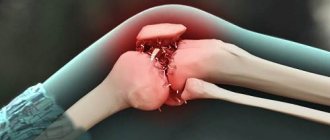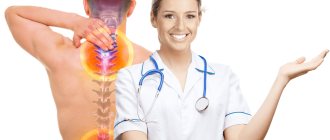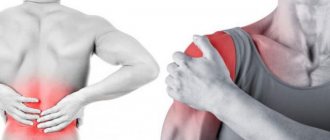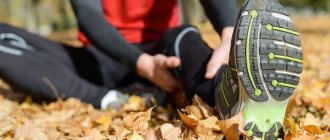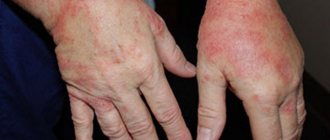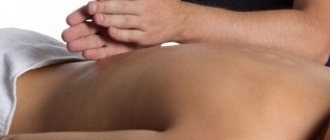General rules
Osteochondrosis of the spine is an inflammatory and degenerative disease that affects the intervertebral discs and ligaments of the spine, manifested by pain in the affected part of the spine and neurological symptoms ( lumbodynia , cervicalgia , cervical/lumbar radiculitis , ischioradiculitis ).
It occurs in both men and women. Treatment of stages 1 and 2 of the disease is conservative, including medicinal and non-medicinal methods. Non-drug methods include exercise therapy, physiotherapeutic procedures, massage, manual therapy, hydrotherapy, traction, immobilization and orthopedic correction, as well as nutritional correction. Obviously, in the presence of already formed degenerative changes in the structure of the spine, nutritional correction cannot cause reverse processes. The main task of proper nutrition for spinal osteochondrosis is to provide the body with all macro/micronutrients that improve the nutrition of cartilage tissue and stimulate its synthesis, which helps slow down degenerative processes.
There is no special diet for the treatment of osteochondrosis and exacerbations of neurological manifestations. A diet for osteochondrosis of the cervical spine should, first of all, be physiologically complete and comply with the principles of rational nutrition, rich in vitamins and minerals. The energy value of the daily diet should, on average, correspond to the amount of daily energy expenditure and not be excessive. For osteochondrosis of any part of the spine (cervical, lumbar, thoracic), the diet should include foods containing natural chondroprotectors .
Diet No. 15 according to Pevzner, which contains all the necessary macronutrients, minerals and an increased amount of fat/water-soluble vitamins and carbohydrates, can be taken as the basis for therapeutic nutrition for cervical and lumbar osteochondrosis for patients with normal body weight The energy value of the diet is 2600-2700 kcal (85-90 g protein, 90-95 g fat and 350-400 g carbohydrates).
It is necessary to consume up to 2 l/day of free fluid, since its lack in the body leads to drying out and loss of elasticity of the intervertebral discs and subsequent destruction. Salt 5-8 g/day. It is allowed to include many foods in the diet with the exception of concentrated broths and first courses based on them, fatty meats and fish, and refractory fats.
Margarine, fatty and salty meat products (smoked meats, canned food), as well as vegetables and fruits with rough skin containing a lot of fiber (beans, corn, lentils, soybeans, beans, chickpeas) and essential oils (garlic, turnips, celery, parsley) are subject to restrictions. , marjoram, tarragon, radish, basil, radish). It is necessary to exclude coffee and strong black tea from the diet, and limit the intake of alcoholic beverages.
In case of osteochondrosis of the lumbar and cervical regions, special attention should be paid to the vitamin and mineral component of the diet. To restore the structure of the cartilage of the intervertebral discs, it is important to supply the body with the entire spectrum of essential vitamins ( A , D , PP , B , C ) and trace elements - calcium, potassium, manganese, phosphorus, magnesium in sufficient quantities. To do this, your diet must include cheeses and dairy products, as well as sesame seeds, almonds, rose hips, watercress, and legumes, which contain a lot of calcium. Vitamin D , found in egg yolks, sea fish, and butter, improves the absorption of calcium For complete absorption of calcium, the body needs a sufficient amount of magnesium, which is present in foods such as avocados, sunflower seeds, spinach, cucumbers, and nuts.
To maintain the structure of the bone tissue of the spine, it is important to include foods rich in phosphorus in the diet - white and cauliflower, bran, peas, soybean pods, lettuce, different types of fish, natural cheeses. Manganese is present in sufficient quantities in chicken meat, cheeses, egg yolks, seaweed, potato peels, celery, onions, walnuts, almonds, chestnuts, and bananas.
The diet must contain foods containing fat-soluble vitamins A and E - animal liver, chicken eggs, fish, vegetable oils, fish oil, peaches.
Vitamin C is found in large quantities in vegetables and fruits (sweet peppers, white and cauliflower, garden greens, rose hips, citrus fruits, currants, apples, pears, plums, avocados, gooseberries), which should occupy a significant part of the daily diet. Meat products, cereals, rye bread, seafood, eggs, mushrooms, fish, milk, and cheeses are rich in B vitamins. However, if possible, it is recommended to consume some of the products fresh, since heat cooking of products significantly reduces the content of nutrients in them.
In case of spinal osteochondrosis, the diet must include foods and dishes containing natural chondoprotectors - a class of complex carbohydrates ( glucosamine , chondroitin ) that have a stimulating effect on the synthesis of cartilage tissue and slow down the processes of its degeneration. Glucosamine is found mainly in cartilage, chicken meat, beef, and hard cheeses. Chondroitin is found in animal tendons and cartilage, skin, and especially in large quantities in red fish (salmon, trout, salmon). Therefore, your diet should include dishes prepared on their basis - jellied fish, jelly, jelly and jelly. It is important to follow a split diet (up to 5-6 times a day) and not to overeat.
A diet for lumbar osteochondrosis for patients with increased body weight should be aimed, first of all, at normalizing weight, since additional loads on the spine increase pressure on the intervertebral discs and compress the surrounding tissues and nerve roots, disrupt their trophism and contribute to faster “wear and tear” and drying of cartilage discs. To do this, in a diet with a normal protein content (80 g), fats (up to 50 g) and carbohydrates are limited to 250-300 g, depending on the amount of extra pounds. Products containing easily digestible carbohydrates - sugar, jam, honey, white bread, pastries, sweets, cream-containing products, as well as products containing animal fats - fatty meat, animal and cooking fats, smoked meats, duck, goose, high-calorie dairy products are subject to restrictions. - sour cream and high-fat cream, butter margarine, mayonnaise. The consumption of soy is limited to 5-6 g/day and the consumption of salty foods (canned vegetables, pickles, canned food), as well as spices and seasonings that stimulate appetite - onions, ketchup, celery, ground black pepper, vinegar, mustard, horseradish, garlic . After normalizing your weight, you can switch to a general diet.
Is it possible to drink coffee with milk or cream if you have osteochondrosis?
Milk and dairy products contain a lot of calcium and nutrients. It is useful for strengthening the bone system, ligaments and joints. Recommended for use for osteochondrosis. Milk helps reduce harm when drinking the drink, which is important for patients.
How can you compensate for the negative effects of coffee on the body:
- Drink cappuccino or latte instead of traditional Americano or espresso.
- Add cream to the drink.
- Iced coffee.
- Use powdered milk.
Instant coffee sticks do not provide any benefits to the body. There is a high sugar content, the presence of preservatives and flavorings. Milk partially replaces calcium washed out of the body, but the drink still does more harm than good. If you want to drink a cup, drink it with milk. Eating foods rich in calcium will reduce the harmfulness of coffee.
Authorized Products
- The diet is allowed to include various soups and other first courses (borscht, rassolnik, cabbage soup, solyanka) cooked in weak, non-concentrated broths.
- Recommended rye or grain bread made from coarse flour.
- Red meat and poultry should be lean and can be prepared in any way.
- It is recommended to include white and red fish, seafood, and chicken eggs in any form in your diet.
- As a side dish you can eat various cereals and rice, pasta made from durum flour.
- Be sure to consume fermented milk drinks (kefir, yogurt, acidophilus), cottage cheese, milk, hard cheeses, and sour cream every day.
- The diet should include a wide variety of vegetables, both raw and after cooking. It is necessary to add ground sesame seeds and flax seeds to vegetable salads. It is important to include various types of vegetable oils and butter in your diet.
- The presence in the diet of such dishes as jellied fish, jelly and gelatin-based dishes - jelly and fruit jellies is mandatory.
- For drinks, it is recommended to consume compotes, rosehip infusion, herbal decoctions, green tea, freshly squeezed fruit and vegetable juices, and still mineral water.
Table of permitted products
| Proteins, g | Fats, g | Carbohydrates, g | Calories, kcal | |
Vegetables and greens | ||||
| zucchini | 0,6 | 0,3 | 4,6 | 24 |
| cabbage | 1,8 | 0,1 | 4,7 | 27 |
| cauliflower | 2,5 | 0,3 | 5,4 | 30 |
| carrot | 1,3 | 0,1 | 6,9 | 32 |
| cucumbers | 0,8 | 0,1 | 2,8 | 15 |
| beet | 1,5 | 0,1 | 8,8 | 40 |
| pumpkin | 1,3 | 0,3 | 7,7 | 28 |
Fruits | ||||
| apricots | 0,9 | 0,1 | 10,8 | 41 |
| oranges | 0,9 | 0,2 | 8,1 | 36 |
| watermelon | 0,6 | 0,1 | 5,8 | 25 |
| bananas | 1,5 | 0,2 | 21,8 | 95 |
| pears | 0,4 | 0,3 | 10,9 | 42 |
| melon | 0,6 | 0,3 | 7,4 | 33 |
| lime | 0,9 | 0,1 | 3,0 | 16 |
| lemons | 0,9 | 0,1 | 3,0 | 16 |
| tangerines | 0,8 | 0,2 | 7,5 | 33 |
| plums | 0,8 | 0,3 | 9,6 | 42 |
| apples | 0,4 | 0,4 | 9,8 | 47 |
Berries | ||||
| grape | 0,6 | 0,2 | 16,8 | 65 |
| strawberry | 0,8 | 0,4 | 7,5 | 41 |
| sea buckthorn | 1,2 | 5,4 | 5,7 | 82 |
| currant | 1,0 | 0,4 | 7,5 | 43 |
Mushrooms | ||||
| mushrooms | 3,5 | 2,0 | 2,5 | 30 |
Nuts and dried fruits | ||||
| nuts | 15,0 | 40,0 | 20,0 | 500 |
| raisin | 2,9 | 0,6 | 66,0 | 264 |
| sesame | 19,4 | 48,7 | 12,2 | 565 |
| sunflower seeds | 20,7 | 52,9 | 3,4 | 578 |
| pumpkin seeds | 24,5 | 45,8 | 4,7 | 556 |
| dates | 2,5 | 0,5 | 69,2 | 274 |
Cereals and porridges | ||||
| buckwheat (kernel) | 12,6 | 3,3 | 62,1 | 313 |
| cereals | 11,9 | 7,2 | 69,3 | 366 |
| corn grits | 8,3 | 1,2 | 75,0 | 337 |
| pearl barley | 9,3 | 1,1 | 73,7 | 320 |
| millet cereal | 11,5 | 3,3 | 69,3 | 348 |
| white rice | 6,7 | 0,7 | 78,9 | 344 |
| barley grits | 10,4 | 1,3 | 66,3 | 324 |
Bakery products | ||||
| bagels | 16,0 | 1,0 | 70,0 | 336 |
| buns | 7,2 | 6,2 | 51,0 | 317 |
| butter horns | 8,3 | 12,1 | 50,5 | 345 |
| Rye bread | 6,6 | 1,2 | 34,2 | 165 |
Confectionery | ||||
| jam | 0,3 | 0,2 | 63,0 | 263 |
| jam | 0,3 | 0,1 | 56,0 | 238 |
| jelly | 2,7 | 0,0 | 17,9 | 79 |
| fruit and berry marmalade | 0,4 | 0,0 | 76,6 | 293 |
| oatmeal cookies | 6,5 | 14,4 | 71,8 | 437 |
Raw materials and seasonings | ||||
| honey | 0,8 | 0,0 | 81,5 | 329 |
| sugar | 0,0 | 0,0 | 99,7 | 398 |
| milk sauce | 2,0 | 7,1 | 5,2 | 84 |
| sour cream sauce | 1,9 | 5,7 | 5,2 | 78 |
Dairy | ||||
| milk | 3,2 | 3,6 | 4,8 | 64 |
| kefir | 3,4 | 2,0 | 4,7 | 51 |
| sour cream | 2,8 | 20,0 | 3,2 | 206 |
| curdled milk | 2,9 | 2,5 | 4,1 | 53 |
| acidophilus | 2,8 | 3,2 | 3,8 | 57 |
| yogurt | 4,3 | 2,0 | 6,2 | 60 |
Cheeses and cottage cheese | ||||
| cheese | 24,1 | 29,5 | 0,3 | 363 |
| cottage cheese | 17,2 | 5,0 | 1,8 | 121 |
Meat products | ||||
| beef | 18,9 | 19,4 | 0,0 | 187 |
| veal | 19,7 | 1,2 | 0,0 | 90 |
| rabbit | 21,0 | 8,0 | 0,0 | 156 |
Bird | ||||
| chicken | 16,0 | 14,0 | 0,0 | 190 |
| turkey | 19,2 | 0,7 | 0,0 | 84 |
Eggs | ||||
| chicken eggs | 12,7 | 10,9 | 0,7 | 157 |
Fish and seafood | ||||
| Red caviar | 32,0 | 15,0 | 0,0 | 263 |
| canned fish | 17,5 | 2,0 | 0,0 | 88 |
Oils and fats | ||||
| butter | 0,5 | 82,5 | 0,8 | 748 |
| linseed oil | 0,0 | 99,8 | 0,0 | 898 |
| olive oil | 0,0 | 99,8 | 0,0 | 898 |
| sunflower oil | 0,0 | 99,9 | 0,0 | 899 |
| ghee | 0,2 | 99,0 | 0,0 | 892 |
Non-alcoholic drinks | ||||
| mineral water | 0,0 | 0,0 | 0,0 | — |
| lingonberry juice | 0,1 | 0,0 | 10,7 | 41 |
| green tea | 0,0 | 0,0 | 0,0 | — |
Juices and compotes | ||||
| compote | 0,5 | 0,0 | 19,5 | 81 |
| apricot juice | 0,9 | 0,1 | 9,0 | 38 |
| jelly | 0,2 | 0,0 | 16,7 | 68 |
| carrot juice | 1,1 | 0,1 | 6,4 | 28 |
| tomato juice | 1,1 | 0,2 | 3,8 | 21 |
| pumpkin juice | 0,0 | 0,0 | 9,0 | 38 |
| rose hip juice | 0,1 | 0,0 | 17,6 | 70 |
| * data is per 100 g of product | ||||
Sources
- Torlak MS., Bagcaci S., Akpinar E., Okutan O., Nazli MS., Kuccukturk S. The effect of intermittent diet and/or physical therapy in patients with chronic low back pain: A single-blinded randomized controlled trial. // Explore (NY) - 2021 - Vol - NNULL - p.; PMID:32859542
- Bowman MA., Neale AV., Seehusen DA. New Research on Back Pain, Diet and Diabetes, Advanced Care Planning, and Other Issues Frequently Seen in Family Medicine. // J Am Board Fam Med - 2021 - Vol32 - N6 - p.759-762; PMID:31704741
- Rashid A. Yonder: Injectable contraception, back pain, family-centered care, and diet soft drinks. // Br J Gen Pract - 2016 - Vol66 - N643 - p.95; PMID:26823257
- Berberian P., Obimba C., Glickman-Simon R., Sethi T. Herbs for Low-Back Pain, Acupuncture for Psychological Distress, Osteopathic Manipulative Therapy for Chronic Migraine, Honey Dressings for Burns, Vegetarian Diet and Risk of Colorectal Cancer. // Explore (NY) - 2015 - Vol11 - N5 - p.410-4; PMID:26238168
Fully or partially limited products
In the diet for osteochondrosis of the spine, fatty concentrated broths, fatty red meat, refractory animal fats, poultry (duck goose), coffee and drinks containing caffeine (strong tea, chocolate) should be excluded. The consumption of sweet foods and alcohol-containing drinks is limited.
Table of prohibited products
| Proteins, g | Fats, g | Carbohydrates, g | Calories, kcal | |
Vegetables and greens | ||||
| spicy vegetables | 2,8 | 0,5 | 5,3 | 36 |
| canned vegetables | 1,5 | 0,2 | 5,5 | 30 |
| swede | 1,2 | 0,1 | 7,7 | 37 |
| bulb onions | 1,4 | 0,0 | 10,4 | 41 |
| canned cucumbers | 2,8 | 0,0 | 1,3 | 16 |
| radish | 1,2 | 0,1 | 3,4 | 19 |
| white radish | 1,4 | 0,0 | 4,1 | 21 |
| turnip | 1,5 | 0,1 | 6,2 | 30 |
| celery | 0,9 | 0,1 | 2,1 | 12 |
| canned tomatoes | 1,1 | 0,1 | 3,5 | 20 |
| horseradish | 3,2 | 0,4 | 10,5 | 56 |
| garlic | 6,5 | 0,5 | 29,9 | 143 |
Raw materials and seasonings | ||||
| mustard | 5,7 | 6,4 | 22,0 | 162 |
| ketchup | 1,8 | 1,0 | 22,2 | 93 |
| mayonnaise | 2,4 | 67,0 | 3,9 | 627 |
| ground black pepper | 10,4 | 3,3 | 38,7 | 251 |
| vinegar | 0,0 | 0,0 | 5,0 | 20 |
Meat products | ||||
| pork | 16,0 | 21,6 | 0,0 | 259 |
| salo | 2,4 | 89,0 | 0,0 | 797 |
| bacon | 23,0 | 45,0 | 0,0 | 500 |
Bird | ||||
| smoked chicken | 27,5 | 8,2 | 0,0 | 184 |
| duck | 16,5 | 61,2 | 0,0 | 346 |
| smoked duck | 19,0 | 28,4 | 0,0 | 337 |
| goose | 16,1 | 33,3 | 0,0 | 364 |
Fish and seafood | ||||
| smoked fish | 26,8 | 9,9 | 0,0 | 196 |
Oils and fats | ||||
| creamy margarine | 0,5 | 82,0 | 0,0 | 745 |
| animal fat | 0,0 | 99,7 | 0,0 | 897 |
| cooking fat | 0,0 | 99,7 | 0,0 | 897 |
| * data is per 100 g of product | ||||
Reviews and results
Reviews among patients with osteochondrosis of different parts of the spine vary significantly. Apparently, this is explained by the stage of the disease, the severity of neurological symptoms and the methods of conservative treatment used, and their effectiveness in each specific case.
- “... I have been suffering from osteochondrosis for more than 15 years. Exacerbations occur periodically, more often after physical activity or during a cold. The doctor recommends proper nutrition and treatment. I mainly save myself with various NSAID drugs. Traction helps a lot, I do special exercises for the spine. I try to monitor my weight, I tried to switch to a vegetarian menu, but the doctor did not recommend it, as well as fasting treatment. Therefore, in nutrition I focus on reducing calories, fortifying and enriching the diet with minerals”;
- “...Lumbar radiculitis is my scourge. Diclofenac injections and massages help. I don’t follow any diet, I just watch my weight and that’s it. But on the advice of a doctor, I take 60 tablets of a vitamin-mineral complex 2-3 times a year.”
